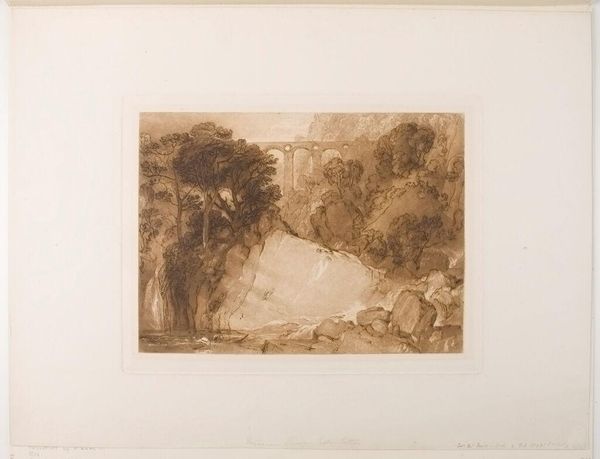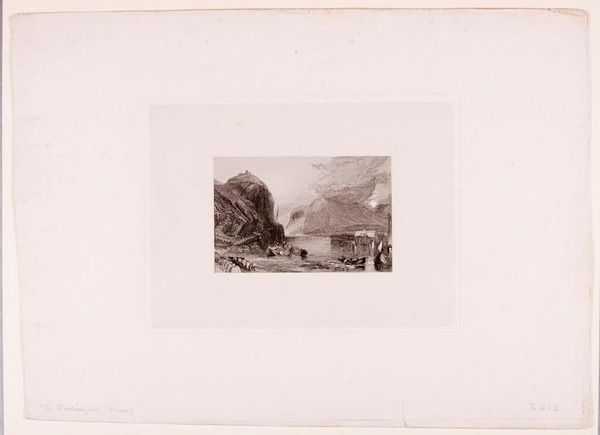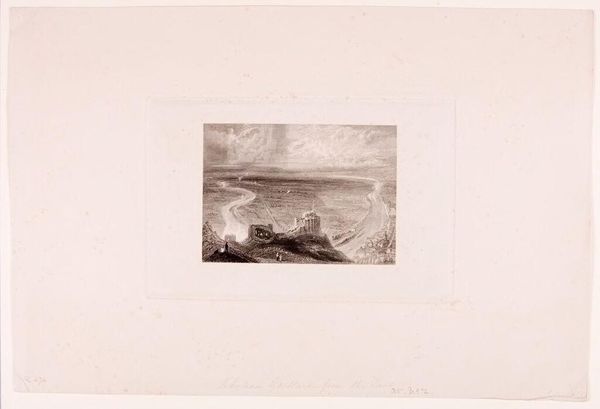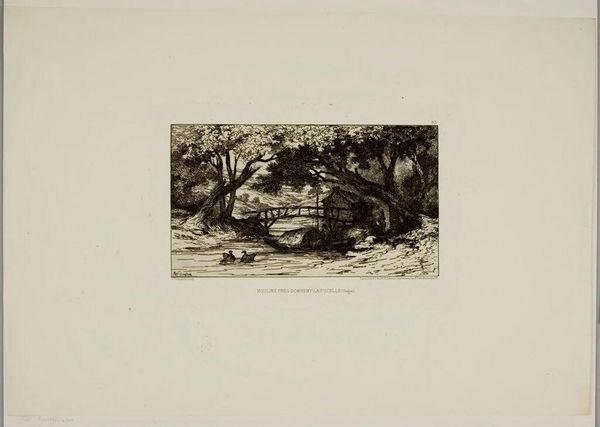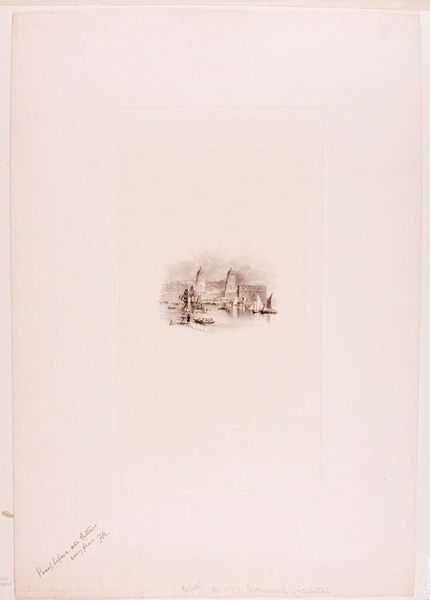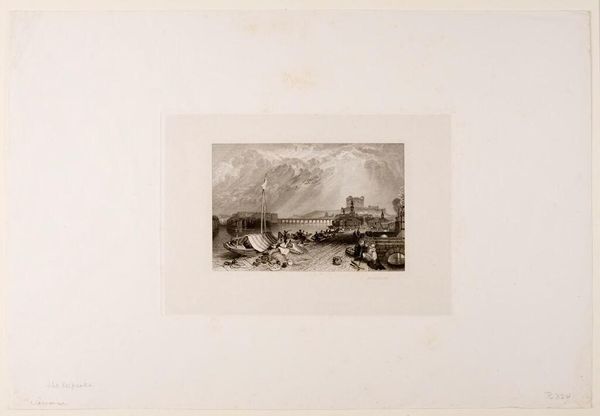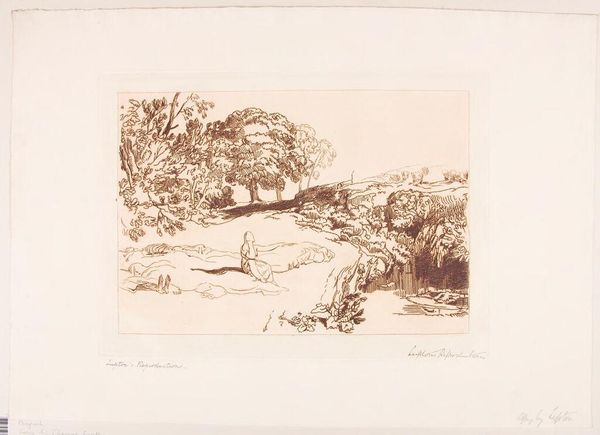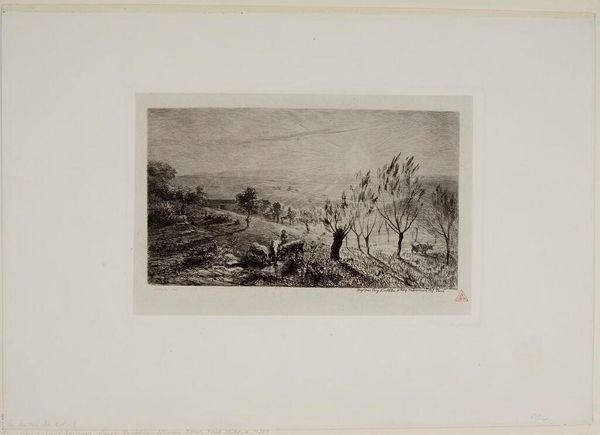
Copyright: CC0 1.0
Curator: Robert Wallis's "Virginia Water II," at the Harvard Art Museums, presents a serene waterscape. It's a print, lending itself to the wider distribution of idyllic scenes. Editor: It evokes a sense of romantic escapism, doesn't it? The dark foliage contrasts with the luminous water. It seems like an invitation away from industrialization. Curator: Precisely. Consider the etching technique—its lines facilitate mass production. And how the subject, a recreational scene, mirrors the rise of leisure for some classes. Editor: Absolutely, leisure was unequally distributed. Looking at this, I think about who had access to such spaces and who was excluded. Class, definitely, but also gender and race. Curator: The material—paper—also speaks to the commodification of nature. Wallis isn't just capturing a scene; he’s creating an object for consumption. Editor: That commodification extends to the very idea of "nature" itself, doesn't it? A controlled, picturesque nature, made available for purchase and private enjoyment. Curator: The print's accessibility allowed for the dissemination of these values, shaping perceptions of the environment. Editor: Examining it in this context prompts us to consider how art can both reflect and reinforce prevailing social structures. Curator: Seeing the work through your lens certainly reveals its deeper complexities. Editor: And your examination of the processes helps us understand the circulation of meaning through art.
Comments
No comments
Be the first to comment and join the conversation on the ultimate creative platform.

